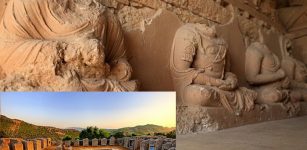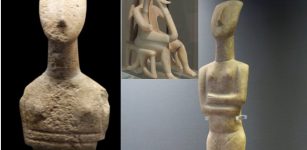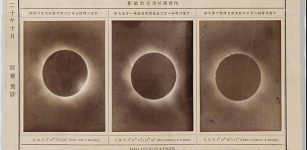Rare Sphinx Seal Belonging To Roman Emperor Discovered In India Confirms Existence Of Legendary Muziris
Jan Bartek – MessageToEagle.com – Whenever the Sphinx is mentioned most think of Egypt, but the Sphinx was a being most ancient civilizations were familiar with. Artifacts depicting the Sphinx were produced in ancient India, Persia, Greece, Israel, and other ancient cultures. The enigmatic Sphinx is simply is one of the most important symbols in our history.
This magnificent and rare sphinx seal was unearthed during archaeological excavations at Pattanam in Kerala, India. It’s an important discovery because the seal-ring with the image of a sphinx and the Greco-Roman head of a miniature statuette may offer evidence this site was the fabled ancient port town of Muziris.
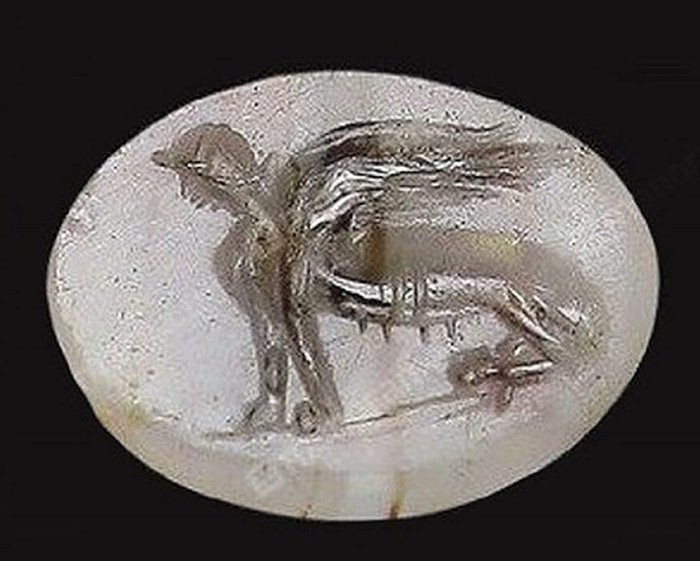
Seal-ring with the image of a sphinx discovered at Pattanam in Kerala, India. Credit: Malayala Manorama.
The exact location of Muziris is said to be unknown to historians and archaeologists, but it has been mentioned in the bardic Tamil poems and several classical sources.
In ancient times this was an important place because Muziris was a key to the interactions between South India and Persia, the Middle East, North Africa, and the Greek and Roman Mediterranean region.
According to P J Cherian, director of the PAMA Institute for the Advancement of Transdisciplinary Archaeology, besides substantial quantities of Indian pottery, the site produced an impressive count of Mediterranean, Red Sea, Arabian Sea, Bay of Bengal and South China Sea pottery, settling the assumption that Pattanam could be an integral part of the legendary port of Muziris, he said.
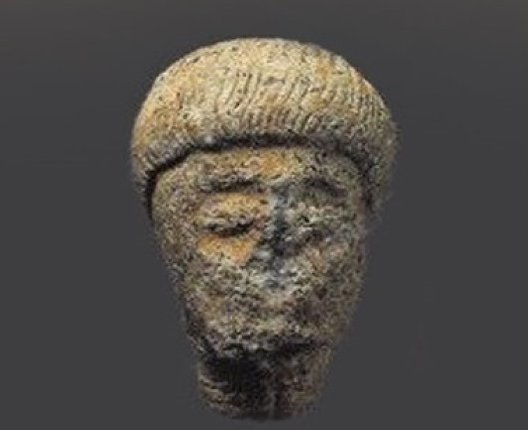
Greco-Roman head of a miniature statuette from excavations at Pattanam in Ernakulam. Credit: Malayala Manorama.
The seal ring was found during the tenth season of excavations carried out under the leadership of PAMA. Scientists say the seal-ring made of banded agate with the carving of sphinx belonged to Octavianus before he became the Roman Emperor Augustus Caesar.
Dr. Giulia Rocco, director (excavations) in Rome who is a specialist on ancient Roman art has examined the Sphinx seal ring and confirmed it belonged to the Roman Emperor.
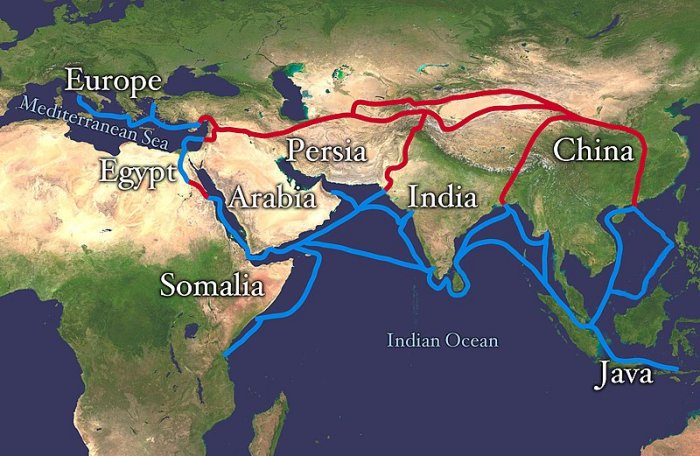
The Purananuru described Muziris as a bustling port city where interior goods were exchanged for imported gold. Credit: Public Domain
“According to Rocco, the accuracy of gem style and carving technique suggest a chronology between the 1st and the 2nd century CE. The recent finds have not been carbon-dated but they were from stratigraphic layers scientifically analyzed in the previous nine excavations,” the Times of India reports.
The beautiful artifact was discovered by a Plus-Two student who volunteered with the PAMA team. Finding this magnificent ancient ring must have been an incredible feeling and a rewarding experience for a student!
See also: More Archaeology News
During previous excavations, the PAMA team found two lockets made of the precious Cornelian stone. On another occasion, an ancient locket with an image of a lion was found, and another locket had the image of Goddess Fortuna. All those findings offer substantial evidence of ancient Greek influence in the region, and these precious objects help us learn more about early maritime history.
Written by Jan Bartek – MessageToEagle.com – AncientPages.com Staff Writer

